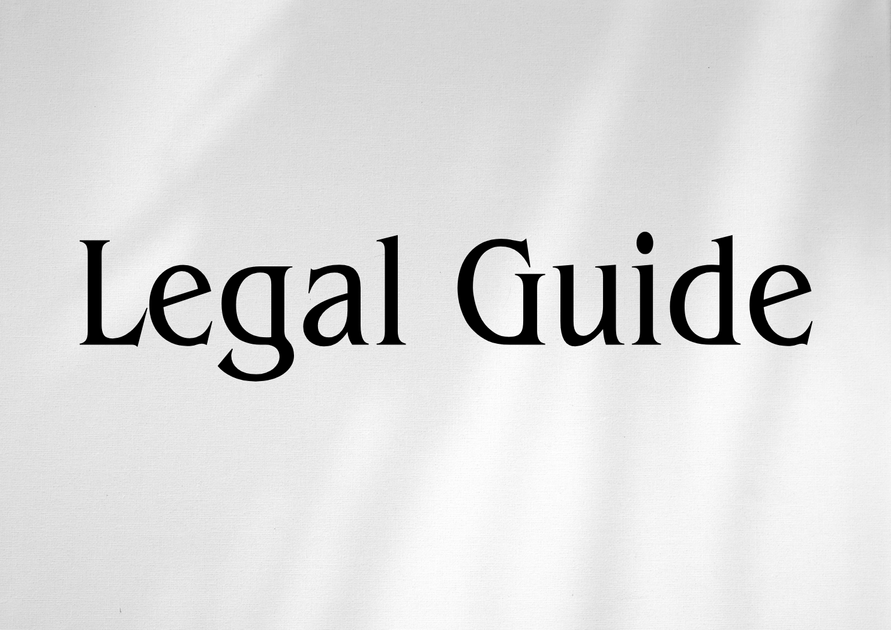Introduction
The rapid economic growth of the United Arab Emirates (UAE) has established its reputation as a leading business destination in the Middle East, drawing enterprises from around the globe. Amidst this dynamic commercial environment, the use of arbitration to resolve business disputes is now standard practice. However, while parties commonly rely on arbitration to provide swift and predictable dispute resolution, improper drafting of arbitration agreements can compromise their validity and effectiveness. These problematic agreements, known as ‘pathological arbitration clauses,’ create significant legal risks that can undermine contractual relationships, delay resolution, or even render dispute resolution mechanisms unenforceable.
Given recent legislative changes, particularly the introduction of Federal Law No. 6 of 2018 on Arbitration and its practical continuity in 2024–2025, understanding the pitfalls and consequences associated with pathological arbitration clauses is crucial. Businesses entering contracts governed by UAE law—especially executives, general counsel, HR managers, compliance officers, and decision-makers—must recognize these risks and implement robust compliance strategies.
This article provides a consultancy-grade analysis of pathological arbitration clauses under UAE law. By dissecting legislative frameworks, real-world impacts, case studies, and compliance tactics, we inform and empower businesses to avoid legal traps, enforce their contractual rights, and stay ahead in a transitioning regulatory landscape.
Table of Contents
- Overview of Arbitration Under UAE Law
- Defining Pathological Arbitration Clauses
- Key Legislative Frameworks: Federal Law No. 6 of 2018 and Related Updates
- Analysis of Provisions and Impact of Pathological Clauses
- Legal Risks and Liabilities for UAE Businesses
- Best Practices and Practical Compliance Strategies
- Case Studies and Practical Illustrations
- Conclusion and Forward-Looking Recommendations
Overview of Arbitration Under UAE Law
The Growing Role of Arbitration in UAE Commercial Practice
Arbitration serves as a preferred method for resolving commercial disputes in the UAE, offering flexibility, confidentiality, and enforceability. The passage of Federal Law No. 6 of 2018 on Arbitration (the ‘Arbitration Law’), which aligns UAE’s legislative framework with the UNCITRAL Model Law, has further solidified confidence in the use of arbitration. Arbitration clauses are now ubiquitous in cross-border, construction, commercial, and labor contracts throughout the UAE. The country hosts several prominent arbitral institutions, including the Dubai International Arbitration Centre (DIAC) and the Abu Dhabi Commercial Conciliation and Arbitration Centre (ADCCAC).
This environment, however, also creates a fertile ground for disputes over the interpretation, validity, and enforceability of arbitration agreements—especially in the presence of ambiguities or inconsistencies. Where parties fail to draft clear and workable arbitration clauses, they risk having dispute resolutions set aside or delayed, undermining the very certainty they seek to achieve.
Recent Updates: The UAE Arbitration Landscape in 2024–2025
Although there have been no sweeping amendments to the Arbitration Law since its enactment, continuous guidance from the UAE Ministry of Justice, periodic case law, and administrative updates to arbitral institution rules have further clarified best practices and highlighted the dangers of litigation traps originating from faulty arbitration clauses. Practitioners need to stay current with these regulatory insights to avoid unintended legal exposures.
Defining Pathological Arbitration Clauses
Understanding the Concept
A ‘pathological arbitration clause’ is not merely a poorly worded provision. Instead, it signifies an arbitration agreement so defective or ambiguous that it renders the arbitration process uncertain, inoperable, or unenforceable. Pathological clauses may:
- Contain internal contradictions about the seat of arbitration or institutional rules
- Refer to non-existent arbitral centres or obsolete rules
- Conflate arbitration with other dispute resolution mechanisms (e.g., litigation or mediation) without a clear process
- Omit essential elements such as the number of arbitrators, language, or law governing the procedure
- Grant excessive discretion to one party
Why Pathological Clauses Are a Legal Risk
Pathological arbitration clauses can compromise the entire dispute resolution process. When parties encounter a pathological clause, they may be forced into protracted pre-arbitration negotiations, satellite litigation over the validity or interpretation of the arbitration agreement, or even court intervention to interpret, reform, or invalidate the clause. This risk is magnified in the UAE, where procedural technicalities and compliance with statutory norms are rigorously enforced by local courts.
Key Legislative Frameworks: Federal Law No. 6 of 2018 and Related Updates
Federal Law No. 6 of 2018: A Modern Regime
The UAE Arbitration Law primarily governs the validity, interpretation, and enforcement of arbitration clauses in the country. Key sections relevant to pathological clauses include:
- Article 7: Arbitration agreements must be in writing and must specify the parties’ consent to refer their disputes to arbitration.
- Article 8: An arbitration agreement can be a standalone agreement or a clause within a broader contract.
- Article 53: Awards may be set aside if the arbitration agreement is deemed invalid, inconsistent with UAE public order, or insufficiently specific.
Further, the law emphasizes party autonomy, but courts retain supervisory jurisdiction to determine threshold issues about the existence, scope, and validity of arbitration agreements. The 2023–2025 updates issued by the UAE Ministry of Justice, including practical judicial guides and domestic enforcement guidance, stress the need for clear, unambiguous arbitration terms.
| Key Issue | Pre-2018 UAECPC Rules | Federal Law No. 6 of 2018 |
|---|---|---|
| Requirement for writing | Implied or oral allowed in practice, but risky | Strict requirement for written agreement (Art. 7) |
| Choice of institution | Less clarity on institutional rules | Clear affirmative reference to arbitral rules required |
| Public policy review | Wide court discretion | Limited intervention; public order only (Art. 53) |
| Appointment of arbitrators | Subject to procedural ambiguity | Guidance for default appointment |
Institutional Rules and Practice
Each major arbitral institution—such as DIAC, LCIA–Dubai, and ADCCAC—has its own set of procedural rules. Arbitration clauses referencing nonexistent, outdated, or merged institutions often lead to confusion and disputes over which rules apply. Recent jurisdictional case law, especially in the Dubai Courts, underscores that parties’ intention, clarity, and feasibility of the clause are pivotal for enforceability under UAE law.
Analysis of Provisions and Impact of Pathological Clauses
Common Defects and Legal Consequences
Typical pathologies in UAE contracts include:
- Incomplete or inconsistent designations of arbitral seat (e.g., “arbitration in Dubai under the rules of an institution that no longer exists”).
- Simultaneous reference to different arbitral institutions or rules without hierarchy (e.g., “arbitration under the DIAC or LCIA rules, seated in Sharjah”).
- Absence of essential procedural details (such as the appointment process for arbitrators).
- Clauses granting unilateral powers (e.g., one party chooses the arbitrator or forum exclusively).
- Ambiguous references to ‘disputes’ (e.g., only some disputes referred to arbitration, remainder to courts).
Under UAE law and institutional rules, such defects create uncertainty about the tribunal’s jurisdiction and expose parties to preliminary jurisdictional objections and court proceedings. The Federal Supreme Court and Dubai Court of Cassation have on several occasions invalidated or reformed arbitration agreements on these grounds. The risk is pronounced: if the clause is found unenforceable, parties default to onshore court jurisdiction, losing the perceived benefits of arbitration.
Judicial Intervention: The Gatekeeper Role of UAE Courts
While the UAE courts recognize arbitration as a valid contractual mechanism, they will not hesitate to refuse the enforcement of an award or order a stay in proceedings if a pathological clause renders the arbitration agreement void or unenforceable. Article 53 of the Arbitration Law provides a clear basis for such intervention. For example, if an institution designated in the clause has ceased to exist, UAE courts may require the parties to agree on an alternative, or may declare the clause altogether inoperable.
Legal Risks and Liabilities for UAE Businesses
Dispute Delays and Increased Costs
The principal legal risks arising from pathological arbitration clauses include:
- Delay and uncertainty: Ambiguous or defective clauses prompt preliminary jurisdictional challenges, court referrals, or even litigation over the meaning and effect of the clause.
- Loss of confidentiality and flexibility: A defective arbitration agreement could thrust the dispute into the public domain, compromising privacy objectives.
- Increased costs: Parties may incur additional legal costs to rectify defective clauses, conduct litigation over the forum, or re-negotiate their dispute resolution arrangements.
- Unintended court jurisdiction: The absence of a valid arbitration clause typically results in UAE courts seizing jurisdiction, which may not align with the parties’ original intentions.
- Enforceability challenges: Even where a tribunal is willing to proceed, enforcement of the award can be resisted on the basis of an invalid arbitration agreement.
Risks of Non-Compliance Under Current Laws
| Type of Defect | Potential Legal Consequence |
|---|---|
| Ambiguous seat/institution | Court refuses to enforce award; requirement for court intervention |
| Unilateral power | Clause may be found contrary to public order, invalidating the agreement |
| Missing procedural details | Tribunal appointment delays, court-imposed process |
| Reference to obsolete rules | Enforceability risks, satellite litigation |
Best Practices and Practical Compliance Strategies
Key Recommendations for Businesses and Legal Practitioners
- Use Institutional Clause Templates: Always utilize arbitration clause templates recommended by the chosen institution (e.g., DIAC or ADCCAC), customizing only where absolutely necessary.
- Audit Legacy Agreements: Conduct a review of existing contracts to identify and rectify legacy or ambiguous arbitration clauses, especially in light of merged or defunct arbitral institutions.
- Draft for Precision and Predictability: The clause should specify the arbitral institution (by its official full name), the governing law, the seat of arbitration, the number of arbitrators, and the language of proceedings. Remove ambiguity or alternatives within the clause.
- Avoid Unilateral Provisions: Clauses that give one party sole discretion for appointment or forum are at significant risk of being struck down by UAE courts as against public policy.
- Training and Capacity Building: Ensure that in-house legal teams and contract managers are regularly trained on latest arbitration law updates and drafting standards.
- Obtain Legal Review: Prior to executing significant contracts, seek review and clearance by specialist UAE arbitration counsel.
- Stay Updated with Regulatory Developments: Regularly consult the UAE Ministry of Justice and institutional websites for updates and new jurisprudence on arbitration clauses.
Checklist for Drafting Enforceable Arbitration Clauses
| Requirement | Compliant Clause | Non-Compliant Clause |
|---|---|---|
| Written Agreement | “Any dispute arising out of or in connection with this contract shall be settled by arbitration…” | Oral or unsigned written arrangement |
| Named Institution | “…under the rules of the Dubai International Arbitration Centre (DIAC)…” | “…submitted to an Abu Dhabi-based institution…” (no specific name) |
| Arbitral Seat | “…seated in Dubai, United Arab Emirates.” | “…at a location to be agreed…” |
| Appointment Mechanism | “A panel of three arbitrators, each party appointing one…” | “Tribunal to be appointed by whichever party brings the dispute” |
Case Studies and Practical Illustrations
Case Study 1: Merger of DIAC and DIFC-LCIA
In 2022, the Dubai International Arbitration Centre (DIAC) consolidated with the DIFC-LCIA Arbitration Centre under Dubai Decree No. 34 of 2021. Many contracts drafted prior to this development contained clauses referring explicitly to ‘DIFC-LCIA’ as the dispute forum. When a dispute arose post-merger, parties were forced to litigate the issue of which institution should administer the arbitration. The Dubai Courts ultimately determined that parties’ intent should prevail if clearly evidenced, but ambiguities led to delays and mounting costs.
Case Study 2: Defectively Worded Clause in Construction Contract
A leading UAE construction company entered a joint venture with a foreign contractor. Their agreement provided for ‘arbitration under UAE law using the London rules’. When disputes surfaced, parties disagreed on the rules and seat of arbitration. Proceedings before a UAE court revealed that the clause was unenforceable due to its ambiguity and practical infeasibility. The court declined to refer the dispute to arbitration, resulting in a protracted legal battle in onshore courts.
Hypothetical: Ambiguity in Language and Number of Arbitrators
Assume two companies select arbitration for dispute resolution but omit to specify language and number of arbitrators. After a dispute arises, each party attempts to appoint three arbitrators. The process collapses, prompting court intervention. The tribunal, once formed, struggles with different submissions in English and Arabic, causing further delays and confusion. If the court finds that there is insufficient consensus to operate the clause, the arbitration is set aside.
Conclusion and Forward-Looking Recommendations
The risk of pathological arbitration clauses in UAE contracts is not merely theoretical, but real and pressing. With the continuing evolution of the UAE’s legal framework—driven by Federal Law No. 6 of 2018, ministerial updates, and a rapidly modernizing business landscape—it is imperative for organizations to audit, update, and future-proof their arbitration agreements.
Every business with UAE-governed contracts should adopt a robust, compliance-oriented approach to arbitration clause drafting. By leveraging updated institutional templates, seeking specialist legal review, and staying alert to domestic legislative trends and judicial decisions, companies can mitigate dispute resolution risks and preserve their commercial interests.
As we move towards 2025 and beyond, expect continued refinement of arbitral practice and court oversight. Firms that act proactively—training their staff, auditing legacy contracts, and prioritizing clear dispute resolution provisions—will enjoy stable, enforceable contracts and a greater degree of commercial certainty. The path to compliance is not only a legal necessity but a strategic business imperative in today’s UAE marketplace.



